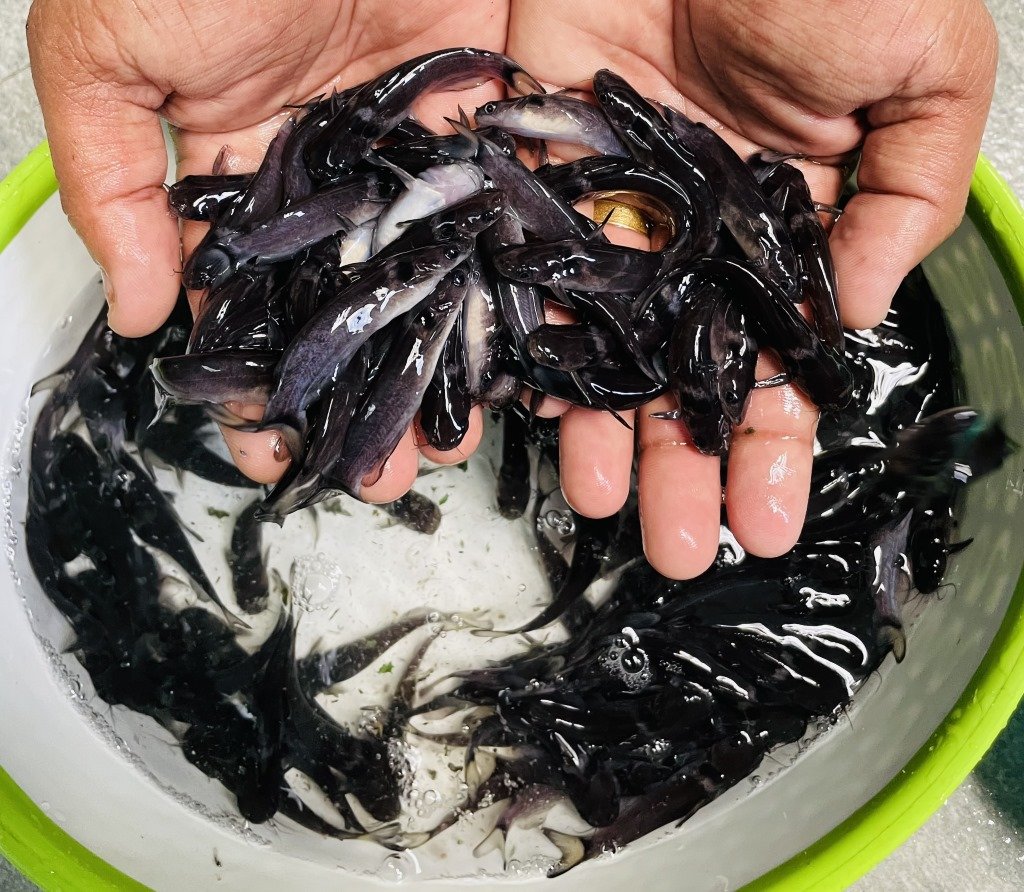In a step towards aquatic conservation, researchers at the Centre for Peninsular Aquatic Genetic Resources (PAGR), under the ICAR-National Bureau of Fish Genetic Resources (ICAR-NBFGR), have developed the first-ever captive breeding protocol for the endangered black-collared yellow catfish (Horabagrus nigricollaris). This breakthrough, detailed in a study published in Aquaculture International, is the first comprehensive research on this species since its discovery in the Chalakudy River, Kerala, in 1994.
A Step Towards Conservation and Sustainability
The black-collared yellow catfish, a species endemic to the Chalakudy River, holds ecological and economic importance, particularly in the ornamental fish trade. However, its survival is threatened by habitat loss and overfishing, leading to its classification as endangered on the International Union for Conservation of Nature (IUCN) Red List.
The research team at PAGR, Kochi, initiated the breeding program in 2020. They successfully bred the first-generation stock, marking a pivotal step in ex-situ conservation. This effort was complemented by the release of advanced fingerlings into the Chalakudy River and collaborations with local fish farmers to enhance captive breeding practices. These initiatives aim to mitigate the risks faced by H. nigricollaris and ensure its long-term survival.
Black-Collared Yellow Catfish
The black-collared yellow catfish, endemic to the Chalakudy River in Kerala, is recognized for its greenish-brown mottled coloration, shorter barbels, and unique genetic traits. It shares its habitat with the endangered Horabagrus Nigricollaris, making targeted conservation efforts crucial. Classified as endangered on the IUCN Red List, the species’ ecological role is at risk. To aid in its preservation, the ICAR-NBFGR has initiated a captive breeding program, which began in 2020, and successfully produced the first generation of stock. The development of effective breeding techniques is vital to conserving the species and supporting sustainable aquaculture practices.
ICAR-NBFGR Bridging Science and Community
Dr. U.K. Sarkar, Director of ICAR-NBFGR, highlighted the integration of advanced scientific techniques with community-based efforts. This approach not only addresses biodiversity preservation but also supports local livelihoods. By enabling sustainable breeding methods, the initiative underscores the value of ecological and economic balance.
The successful development of the captive breeding protocol represents a significant advancement in conservation strategies for freshwater species of the Western Ghats. It offers a replicable model for protecting other endangered aquatic species while promoting ecological sustainability.




